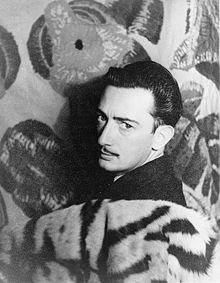First of all, thanks to Melinda for being such a wonderful partner in this assignment. And also I Ling for her great advises.
DAP 1
Questions & Answers:
12/8/2010 7:10:06 PM] Melinda Leong: Let's do the 1st picture
[12/8/2010 7:10:26 PM] Shirley Awe: grandmother pic
[12/8/2010 7:10:27 PM] Shirley Awe: ?
[12/8/2010 7:10:51 PM] Melinda Leong: yes.
[12/8/2010 7:10:55 PM] Shirley Awe: ok
[12/8/2010 7:11:02 PM] Shirley Awe: im ready
[12/8/2010 7:11:47 PM] Melinda Leong: If u can give an age, what aga can u give to this person?
[12/8/2010 7:12:06 PM] Shirley Awe: this person is old
[12/8/2010 7:12:17 PM] Shirley Awe: 80yrs old
[12/8/2010 7:12:43 PM] Melinda Leong: In this picture, where is she at present?
[12/8/2010 7:13:02 PM] Shirley Awe: she is currently at home
[12/8/2010 7:13:13 PM] Shirley Awe: infront of the gate
[12/8/2010 7:13:50 PM] Melinda Leong: Can you describe this person current home?
[12/8/2010 7:14:29 PM] Shirley Awe: she is staying at a double storey terrace house,
[12/8/2010 7:14:35 PM] Shirley Awe: she is alone most of the time
[12/8/2010 7:15:34 PM] Shirley Awe: usually she will have her grandson to accompany her at nite after he return from work
[12/8/2010 7:15:59 PM] Shirley Awe: and occasioanaly visits from friends and relatives
[12/8/2010 7:16:39 PM] Melinda Leong: In looking at the person, what emotion is she more likely to express in the way she is standing?
[12/8/2010 7:17:11 PM] Shirley Awe: she is feeling calm and happy
[12/8/2010 7:17:33 PM] Shirley Awe: as if she is awaiting for the arrival of somebody
[12/8/2010 7:19:01 PM] Melinda Leong: By the way of this person pose standing at infront of the gate, there will be people passing by, what can the people see her
emotionly?
[12/8/2010 7:19:38 PM] Shirley Awe: happy and proud
[12/8/2010 7:20:35 PM] Melinda Leong: If this person is to make the clohes that she is wearing now, what colour wil she choose?
[12/8/2010 7:21:14 PM] Shirley Awe: she will choose grey, beige,
[12/8/2010 7:21:31 PM] Shirley Awe: very pastel, soft color
[12/8/2010 7:22:10 PM] Melinda Leong: If into a situation, what will provoke her to be angry?
[12/8/2010 7:22:41 PM] Shirley Awe: someone being disrespectful to her
[12/8/2010 7:23:06 PM] Shirley Awe: saying bad stuff about her which are not true
[12/8/2010 7:24:09 PM] Melinda Leong: If you look at the picture again, if there was a word or phase that you can associate in creating a title what will it be?
[12/8/2010 7:25:06 PM] Shirley Awe: my loving grandmother, i miss you alot
[12/8/2010 7:26:16 PM] Melinda Leong: So, correct me if I am wrong, the person is currently at home, infront of the gate at her double story terrace house, alone most
of the time until her grandson return, yeah?
[12/8/2010 7:26:37 PM] Melinda Leong: She felt calm and happy, happy and proud seen by the pass by.
[12/8/2010 7:26:55 PM] Melinda Leong: Wearing a grey and beige, pastel soft colour clothing.
[12/8/2010 7:27:01 PM] Shirley Awe: yes
[12/8/2010 7:27:19 PM] Shirley Awe: she is most happy to see her relative coming back/visiting to her
[12/8/2010 7:27:50 PM] Melinda Leong: Is there anything that stand out to you in this person in this picture?
[12/8/2010 7:28:28 PM] Shirley Awe: u mean physically?
[12/8/2010 7:28:42 PM] Melinda Leong: Yup.
[12/8/2010 7:30:02 PM] Shirley Awe: she has a very beautiful face and also her breast
Melinda's SummaryThe person is currently at home, infront of the gate at her double story terrace house, alone most of the time until her grandson return.
She felt calm and happy, happy and proud seen by the pass by.
Wearing a grey and beige, pastel soft colour clothing.
She is most happy to see her relative coming back/visiting to her.
Title: My loving grandmother, I miss you alot


 Drawing during and 'Operation Meeting' where we talk about Human Capital Strategies, Submissions, Strategic Plan, BUDGET and etc.
Drawing during and 'Operation Meeting' where we talk about Human Capital Strategies, Submissions, Strategic Plan, BUDGET and etc. I must be missing my children very much. Thinking of ways to get closer to them.
I must be missing my children very much. Thinking of ways to get closer to them. Drawing during a 'Graffiti Art' meeting, which is in line with what I like. (free strokes, lots of exploration/creativity in progress)
Drawing during a 'Graffiti Art' meeting, which is in line with what I like. (free strokes, lots of exploration/creativity in progress)
 roducing Paul Gauguin
roducing Paul Gauguin Paul Gauguin, 1897–1898
Paul Gauguin, 1897–1898 In the rather peaceful years following WW1, other movements that will replace Dada, with Surrealism being the first and most descendant. Andre Breton was the instigator of Surrealism in 1924. A writer, not an artist, Breton followed the Dada philosophy of allowing things to happen naturally in his work rather than putting words together in a logical way. His emphasis on a dream world, word association games and unconscious writing was carried into the visual world of Surrealist painters and sculptors. Salvador Dali put his fantastic ideas and dreams on canvas in the Surrealist movement.
In the rather peaceful years following WW1, other movements that will replace Dada, with Surrealism being the first and most descendant. Andre Breton was the instigator of Surrealism in 1924. A writer, not an artist, Breton followed the Dada philosophy of allowing things to happen naturally in his work rather than putting words together in a logical way. His emphasis on a dream world, word association games and unconscious writing was carried into the visual world of Surrealist painters and sculptors. Salvador Dali put his fantastic ideas and dreams on canvas in the Surrealist movement. Artist Salvador Dalí
Artist Salvador Dalí